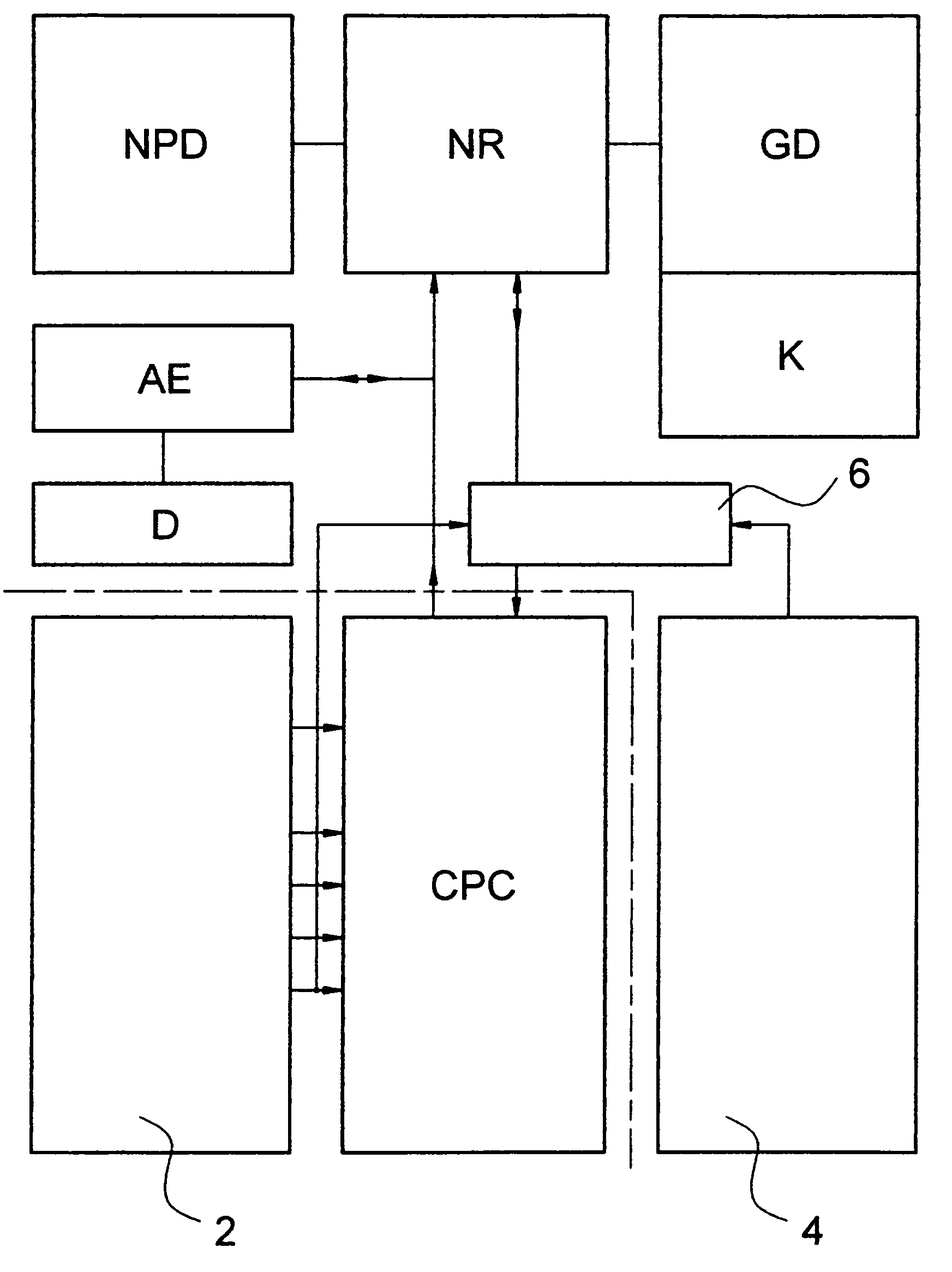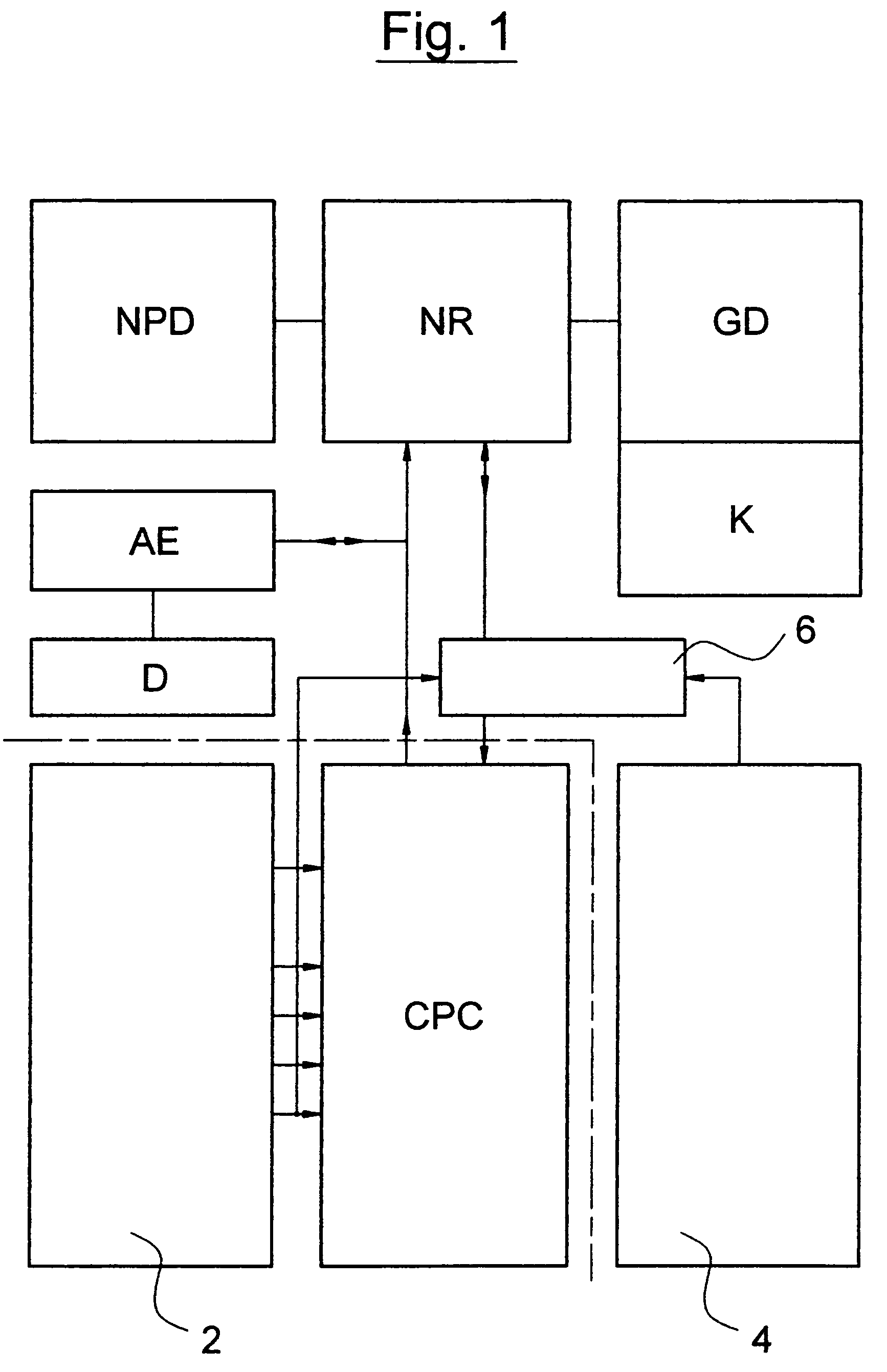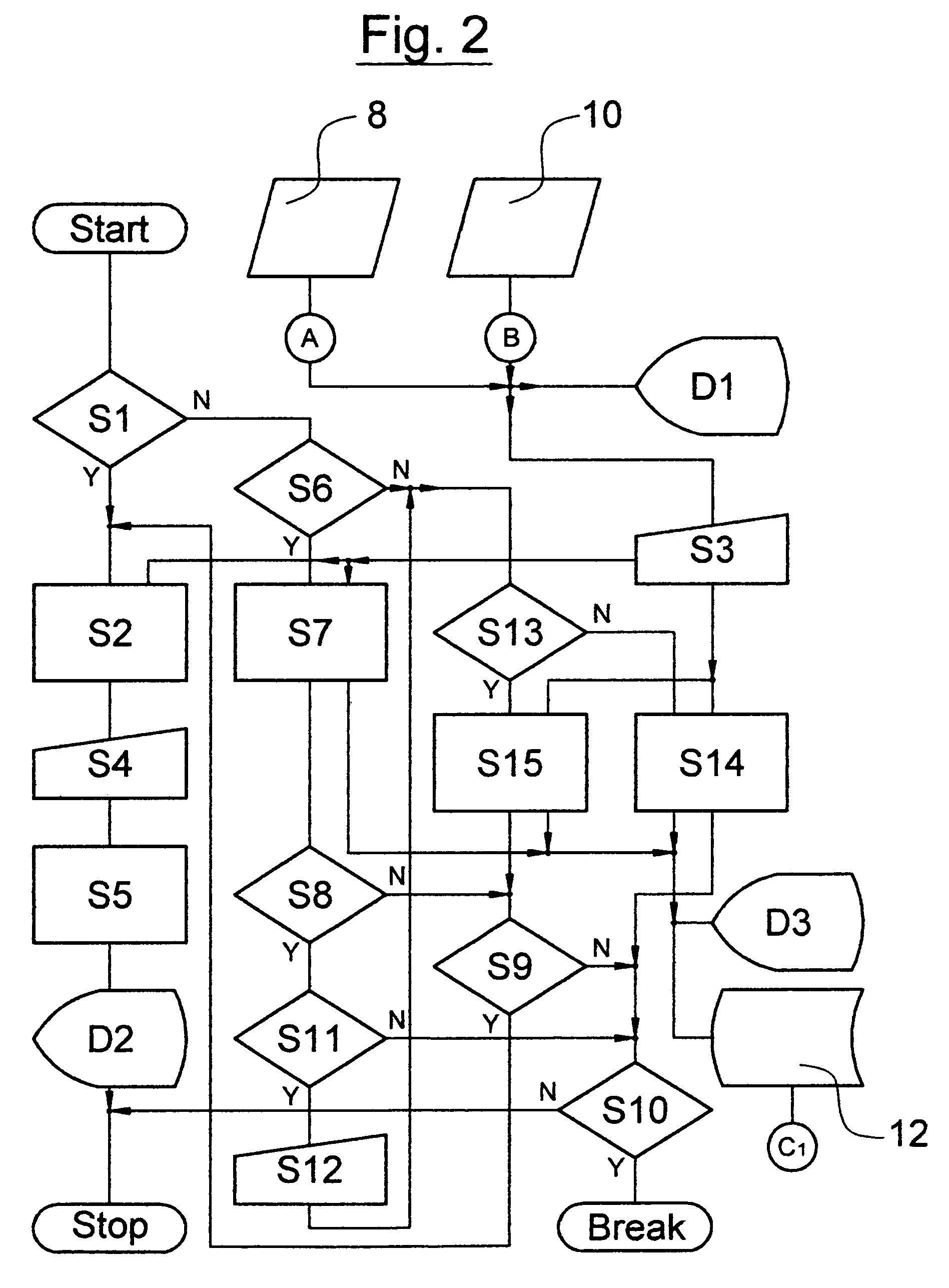Method for planning the journey of a submarine
a technology for submarines and journeys, applied in the direction of secondary cells, underwater vessels, navigational aid arrangements, etc., can solve the problems of unacceptable production of hsub>2 /sub>gas, limited battery capacity, and inability to discharge, etc., to achieve the effect of shortening the unfavorable charging conditions
- Summary
- Abstract
- Description
- Claims
- Application Information
AI Technical Summary
Benefits of technology
Problems solved by technology
Method used
Image
Examples
Embodiment Construction
[0033]Referring to the drawings in particular, FIG. 1 schematically shows the design of a system in which a cruise or travel profile computer is integrated in order to carry out the method according to the invention for planning the journey of a submarine. The explained example relates to a travel profile computer which is integrated into a submarine, and here operates together with an existing navigation system. At the same time the navigation system forms the interface for the input and output of data. The navigation system comprises a navigation computer NR which is connected to a navigation planning display NPD which represents the planned and current travel route in an electronic marine chart. The navigation computer is furthermore connected to a graphic display GD which serves for representing current travel data as well as the predicted travel profiles and in particular the predicted course of the capacity of the batteries in graphic or numerical form. The installation furthe...
PUM
 Login to View More
Login to View More Abstract
Description
Claims
Application Information
 Login to View More
Login to View More - R&D
- Intellectual Property
- Life Sciences
- Materials
- Tech Scout
- Unparalleled Data Quality
- Higher Quality Content
- 60% Fewer Hallucinations
Browse by: Latest US Patents, China's latest patents, Technical Efficacy Thesaurus, Application Domain, Technology Topic, Popular Technical Reports.
© 2025 PatSnap. All rights reserved.Legal|Privacy policy|Modern Slavery Act Transparency Statement|Sitemap|About US| Contact US: help@patsnap.com



